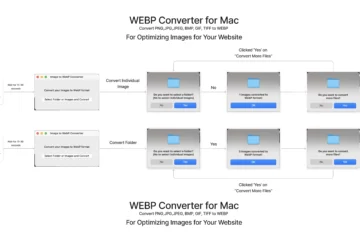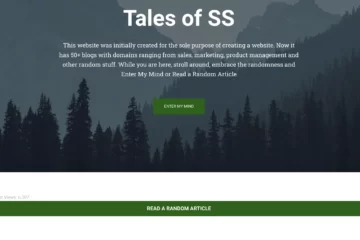In today’s digital ecosystem, the battle for customer loyalty is fiercer than ever. Amidst this competitive frenzy, a nuanced strategy has emerged as a powerful tool for retaining customers: the deliberate use of complexity. This retention by complexity approach, subtle yet effective, involves creating systems, services, or products that are so intricately embedded in the user’s lifestyle or workflows that the thought of switching to an alternative feels overwhelmingly cumbersome. Here, we explore how some of the world’s most recognizable brands have skillfully deployed this tactic to keep their users loyal.
1. Spotify: The Personalized Playlist Lock-In
Spotify stands out as a prime example of customer retention through complexity. The music streaming giant captures users’ hearts with personalized playlists like “Discover Weekly” and “Your Top Songs of the Year.” These features, tailored to individual tastes and listening habits, make users’ experiences highly personal and difficult to replicate on competing platforms like YouTube Music. The complexity lies not in the use of the platform but in the emotional and time investment users make in curating their music experiences, creating a significant barrier to exit.
2. Adobe: The Professional Suite Standard
Adobe has cemented its place as an indispensable tool for creatives by offering a comprehensive suite of software that integrates seamlessly with one another. From Photoshop to Illustrator, the Adobe Creative Cloud’s complexity and depth in functionalities make it the industry standard for professional design work. This ecosystem makes transitioning to simpler, less comprehensive tools unattractive for professionals who have invested time in mastering Adobe’s offerings, thus ensuring customer retention through complexity.
3. Apple: The Ecosystem Entanglement
Apple’s ecosystem, comprising devices, software, and services, exemplifies complexity-driven retention. Once users purchase an Apple product, they find themselves drawn into an ecosystem that offers seamless integration across devices and services—iMessage, iCloud, Apple Music, and more. The more Apple products a user owns, the more entangled they become in the Apple ecosystem, making the idea of switching to another platform not just a matter of replacing a device but reconfiguring an entire lifestyle.
4. Amazon Prime: The Bundle of Convenience
Amazon Prime leverages complexity through its bundled services, including fast shipping, streaming, and exclusive deals. This multiplicity of services, coupled with the convenience of having them under one subscription, creates a high barrier to exit. The complexity here is in the perceived loss of value across multiple dimensions of one’s online consumption habits, from shopping to entertainment, should they choose to leave Prime.
5. Facebook: The Social Network Web
Facebook, with its vast network of social connections and content, illustrates how complexity can be woven into social media to retain users. The platform’s algorithm tailors the user experience so specifically to individual interests and social interactions that leaving Facebook would mean losing access to a personalized digital social life. The complexity of recreating such a network and content curation elsewhere anchors users to the platform.
6. Microsoft Office: The Professional Workflow Integration
Microsoft Office, with its suite of productivity tools, has become deeply ingrained in professional and academic settings. The complexity of Office comes from its widespread adoption, file format standards, and integration across workplaces and schools. Users find it challenging to switch to alternative platforms due to the ubiquitous nature of Office documents and the collaboration features deeply embedded in professional workflows.
7. Netflix: The Content Investment Trap
Netflix retains customers by continuously investing in a diverse range of original content, making it the only place to continue watching beloved series or discover new favorites. This content exclusivity, combined with personalized recommendations, creates a unique viewing ecosystem where the thought of unsubscribing feels like a loss of access to an ever-evolving library tailored to one’s tastes.
8. Google: The Data-Driven Ecosystem
Google uses complexity to retain users by offering an interconnected web of services that cater to various online activities—search, email, maps, cloud storage, and more. The convenience of having a unified account and the integration across these services make users reliant on Google’s ecosystem, turning the prospect of switching to alternative platforms into a daunting task of untangling oneself from Google’s extensive data-driven web.
9. LinkedIn: The Professional Network Niche
LinkedIn has carved a niche for itself by being the go-to platform for professional networking, job searching, and industry insights. The retention by complexity in LinkedIn lies in the extensive professional networks users build over time and the platform’s unique position as a bridge between industries, job seekers, and recruiters. Leaving LinkedIn means severing ties with a professional ecosystem that cannot be easily replicated elsewhere.
These brands showcase the strategic use of complexity as a means of ensuring customer loyalty. By integrating their products and services so deeply into users’ lives and workflows, they’ve created barriers to exit that are not just technical but emotional and practical. The challenge for consumers becomes not just finding a comparable product or service but untangling themselves from a web of dependencies that these platforms have skillfully woven.
As we navigate this intricate world of brand loyalty, it becomes clear that the complexity, while a hurdle to switching, is also a testament to the innovation and value these brands provide. The key for users is to weigh the benefits of such entanglement against the freedoms it may compromise.


